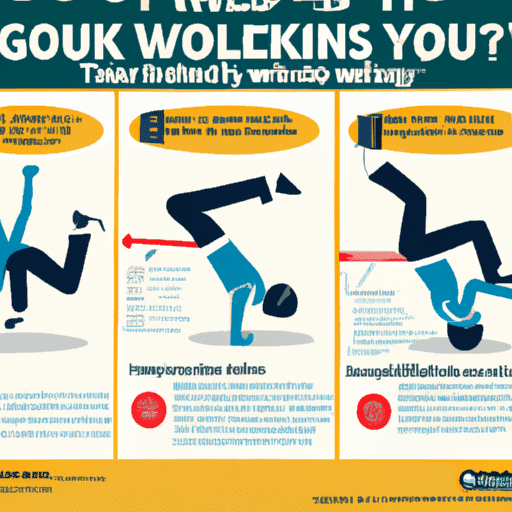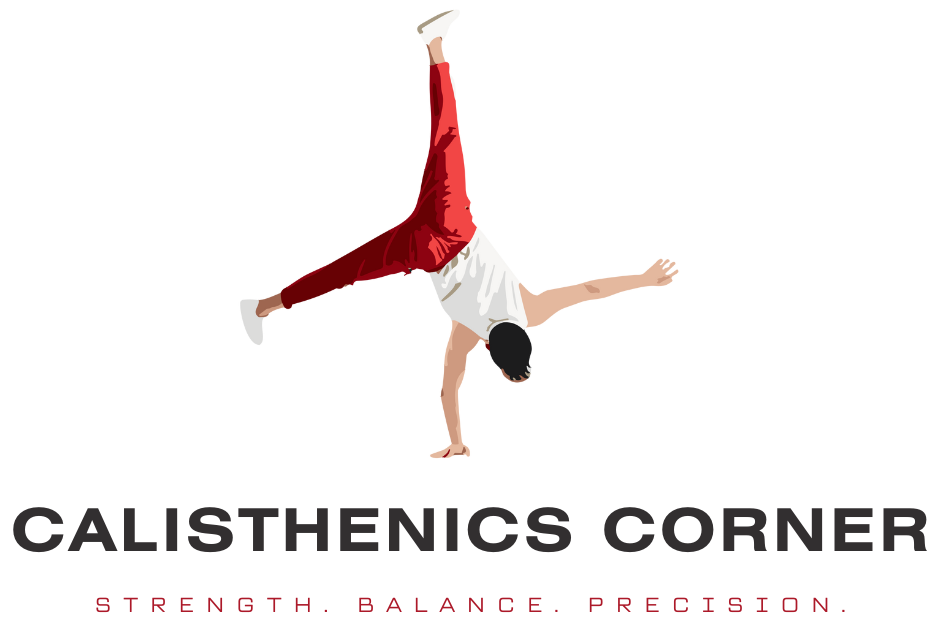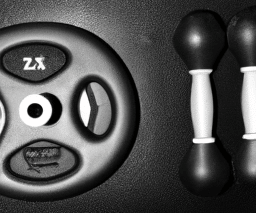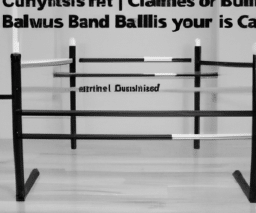Are you ready to embark on a journey to a fitter, stronger version of yourself? Look no further than calisthenics! This article will provide you with a helpful guide on how to get started in this dynamic and engaging form of exercise. From understanding the basic principles to incorporating progressive movements, you’ll soon be well-equipped to begin your calisthenics journey and achieve your fitness goals. So, let’s dive in and discover the exciting world of calisthenics!
Setting goals
Define your goals
Before you begin your calisthenics journey, it is important to define your goals. Take some time to think about what you want to achieve through your workouts. Do you want to build strength, improve flexibility, or just maintain overall fitness? Setting clear and specific goals will give you direction and motivation as you progress in your calisthenics practice.
Set realistic and achievable targets
While it’s great to have ambitious goals, it is equally important to set realistic and achievable targets. Setting targets that are too high can lead to frustration and demotivation. Start with smaller milestones that you can easily reach and gradually work your way up. As you achieve your targets, you can set new ones that challenge you but are still attainable. This way, you will experience a sense of accomplishment and stay motivated throughout your calisthenics journey.
Create a workout plan
Once you have defined your goals and set targets, it’s time to create a workout plan. A well-structured plan will help you stay focused and organized. Determine how many days per week you will dedicate to calisthenics and allocate specific exercises for each day. Consider incorporating strength training, flexibility work, and rest days into your plan. Having a workout plan in place will make it easier for you to stay consistent and track your progress.
Basic equipment
Pull-up bar
A pull-up bar is an essential piece of equipment for calisthenics. It allows you to perform various upper body exercises that target your back, shoulders, and arms. You can find pull-up bars that are easy to set up at home or use the ones available at outdoor parks.
Parallel bars
Parallel bars are great for performing exercises like dips and L-sits. They help develop upper body strength and improve core stability. You can find parallel bars at outdoor parks or invest in a set of portable parallel bars for home use.
Resistance bands
Resistance bands are versatile tools that can be used to add extra resistance to your exercises. They help increase the intensity of your workout and assist in building strength. Resistance bands are lightweight and easy to carry, making them ideal for home or outdoor workouts.
Jump rope
A jump rope is a simple and inexpensive equipment that can provide a great cardiovascular workout. Jumping rope improves coordination, agility, and endurance. It can be easily incorporated into your warm-up routine or used as a standalone cardio exercise.
Yoga mat
A yoga mat provides a comfortable surface for performing floor exercises and stretches. It provides cushioning and prevents slipping during your workout. A yoga mat is a must-have for calisthenics enthusiasts who want to practice exercises like planks, push-ups, and yoga poses.
Warm-up and stretching
Importance of warm-up
Before diving into your calisthenics workout, it is important to warm up properly. A warm-up routine prepares your body for exercise by increasing blood flow to the muscles, raising your body temperature, and improving joint mobility. It reduces the risk of injury and enhances your overall performance during the workout.
Dynamic stretching exercises
Dynamic stretching involves moving your muscles and joints through a full range of motion. It helps improve flexibility, increase muscle activation, and prepares your body for the upcoming workout. Incorporate exercises like arm circles, leg swings, and trunk rotations into your warm-up routine.
Static stretching exercises
Static stretching involves holding a stretch for a prolonged period without movement. It helps improve flexibility, relaxes the muscles, and reduces muscle tension. Include static stretches for major muscle groups, such as hamstrings, quadriceps, and shoulders, after your workout to enhance flexibility and promote recovery.
Mastering the basics
Push-ups
Push-ups are a fundamental exercise in calisthenics that target the chest, shoulders, triceps, and core muscles. Start with the basic push-up position, keeping your back straight and lowering your body until your chest almost touches the ground. Push yourself back up to the starting position. As you build strength, you can experiment with different variations like diamond push-ups or decline push-ups.
Squats
Squats are an excellent lower body exercise that targets your quadriceps, hamstrings, and glutes. Begin with your feet shoulder-width apart, lower your body by bending your knees, and push through your heels to return to the starting position. As you progress, you can try pistol squats or jump squats for an added challenge.
Planks
Planks are a great exercise for building core strength and stability. Get into a push-up position and lower yourself onto your forearms. Keep your body in a straight line from head to toe, engaging your abdominal muscles and holding the position for a specified time. Aim to increase the duration of your plank as you develop greater strength.
Lunges
Lunges target the muscles in your legs, including your quadriceps, hamstrings, and glutes. Start by stepping forward with one leg, bending both knees until the back knee is almost touching the ground. Push back up to the starting position. You can perform walking lunges, reverse lunges, or side lunges to add variety and challenge to your leg workout.
Dips
Dips are an effective exercise for strengthening your triceps, chest, and shoulders. Find a set of parallel bars or use the edge of a stable surface. Lower your body by bending your elbows until your shoulders are below your elbows, then push yourself back up. As you progress, you can try using parallel bars to perform more challenging variations, such as Russian dips or L-sit dips.
Jumping jacks
Jumping jacks are a simple yet effective cardiovascular exercise that engages your whole body. Start with your feet together and your arms by your sides. Jump, spreading your legs wider than hip-width apart while raising your arms above your head. Jump again, returning to the starting position. You can increase the intensity of jumping jacks by adding a squat or performing them at a faster pace.
Progressions and variations
Gradually increasing difficulty
To continue challenging your body and making progress in calisthenics, it is important to gradually increase the difficulty of your exercises. This can be done by adding more repetitions, increasing the range of motion, or incorporating more advanced variations. By constantly pushing yourself and stepping out of your comfort zone, you will continue to build strength and improve your skills.
Advanced push-up variations
Once you have mastered the basic push-up, you can experiment with advanced push-up variations to further challenge your upper body strength. Some examples include one-arm push-ups, clap push-ups, and planche push-ups. These variations require greater stability, control, and strength, so be sure to progress slowly and maintain proper form to avoid injury.
One-legged squats
One-legged squats, also known as pistol squats, are an advanced variation of the squat exercise. They require greater balance, stability, and strength in your legs. Start by squatting down on one leg, with the other leg extended in front of you. Lower your body until your thigh is parallel to the ground, then push back up. If you find it challenging, you can hold onto a stable surface for support until you build enough strength to perform them without assistance.
Handstand progression
Handstands are an impressive skill that requires upper body and core strength, as well as balance and coordination. Begin with wall-assisted handstands, placing your hands on the floor a few inches away from a wall and kicking your legs up against the wall for support. As you gain confidence and strength, you can gradually move away from the wall and practice freestanding handstands. Remember to progress at your own pace and prioritize safety.
Muscle-up progression
The muscle-up is an advanced calisthenics exercise that combines a pull-up and a dip. It requires significant upper body and core strength. Start by practicing your pull-ups and dips independently, gradually increasing your strength and mastering each exercise. Once you feel comfortable with both, begin practicing the transition from the pull-up to the dip, focusing on smooth and controlled movements. The muscle-up can be challenging, so patience and consistency are key.
Building strength
Focus on progressive overload
Progressive overload is a principle that involves gradually increasing the demands on your muscles to stimulate growth and strength gains. In calisthenics, you can apply progressive overload by adding more repetitions, increasing the difficulty of exercises, or incorporating additional resistance. By consistently challenging your muscles, you will encourage adaptation and continuous improvement.
Importance of rest and recovery
While it’s important to push yourself during your calisthenics workouts, it’s equally important to prioritize rest and recovery. Rest days allow your muscles to repair and grow stronger. Adequate sleep, proper nutrition, and minimizing stress are also crucial for optimal recovery. Listen to your body and incorporate rest days into your training schedule to prevent overtraining and reduce the risk of injury.
Incorporate resistance training
To continue building strength in calisthenics, it can be beneficial to incorporate resistance training. Resistance bands and weights are effective tools for adding external resistance to your exercises, increasing the stimulus on your muscles. For example, you can use resistance bands for assisted pull-ups or add weights to lunges and squats. Gradually increase the resistance as you get stronger to keep challenging your muscles.
Compound exercises for overall strength
Compound exercises involve multiple muscle groups and joints, making them highly effective for building overall strength. Exercises like squats, push-ups, and dips engage larger muscle groups, stimulate greater muscle activation, and provide a functional strength that transfers to everyday activities. Incorporating compound exercises into your routine will help you build a strong foundation and improve your performance in other calisthenics movements.
Improving flexibility
Dynamic flexibility exercises
Dynamic flexibility exercises involve moving your muscles and joints through a full range of motion in a controlled manner. They help improve flexibility, increase blood flow to the muscles, and activate the nervous system. Incorporate exercises like arm circles, leg swings, and trunk rotations into your warm-up routine to prepare your body for the upcoming workout.
Static stretching routines
Static stretching involves holding a stretch for a prolonged period without movement. It helps improve flexibility, relaxes the muscles, and reduces muscle tension. Include static stretches for major muscle groups, such as hamstrings, quadriceps, and shoulders, after your workout to enhance flexibility and promote recovery. Hold each stretch for 20-30 seconds and breathe deeply to deepen the stretch.
Yoga for improved flexibility
Yoga is a great complement to calisthenics as it focuses on flexibility, strength, balance, and mindfulness. Regular yoga practice can enhance your range of motion, improve posture, and reduce the risk of injury. Consider incorporating yoga sessions into your weekly workout routine to improve your flexibility and overall well-being.
Training frequency
Determining optimal training days per week
Determining the optimal training frequency per week depends on various factors, including your fitness level, goals, and recovery capacity. For beginners, starting with 2-3 training days per week is recommended to allow for proper adaptation and recovery. As you progress, you can gradually increase the training frequency to 4-5 days per week, with rest days and active recovery days in between.
Balancing strength and skill development
To achieve a well-rounded calisthenics practice, it is important to balance strength and skill development. Strength-focused workouts should include exercises that target major muscle groups and promote muscle growth. Skill-focused workouts should prioritize practicing and mastering more advanced movements and progressions. Finding the right balance between strength and skill training will help you reach your goals effectively while exploring new challenges.
Rest days and active recovery
Rest days are essential for allowing your muscles to recover and repair. Plan at least two rest days per week to give your body the opportunity to heal and grow stronger. On these days, focus on activities that promote active recovery, such as gentle stretching, light cardio, or mobility exercises. These activities will help improve circulation, reduce muscle soreness, and maintain flexibility.

Nutrition and hydration
Fueling your body with the right nutrients
Proper nutrition plays a crucial role in supporting your calisthenics training and overall health. Fuel your body with a balanced diet that includes lean proteins, complex carbohydrates, healthy fats, and plenty of fruits and vegetables. Prioritize whole foods and minimize processed foods to ensure you are getting a wide range of nutrients that support muscle growth, repair, and overall performance.
Importance of protein for muscle repair
Protein is essential for muscle repair and growth. To support your calisthenics training, aim to consume an adequate amount of protein with each meal and snack. Good sources of protein include lean meats, fish, poultry, eggs, dairy products, legumes, and plant-based proteins like tofu or tempeh. Consider incorporating protein-rich snacks post-workout to aid in muscle recovery.
Staying hydrated during workouts
Hydration is important for maintaining optimal performance and preventing dehydration during your workouts. Drink water before, during, and after your training sessions to replenish fluids lost through sweat. Remember to listen to your body’s thirst signals and drink enough water throughout the day to stay adequately hydrated. If you engage in intense or prolonged workouts, consider adding electrolytes to your water to replenish lost minerals.
Tracking progress
Maintaining a workout journal
Keeping a workout journal is a great way to track your progress and stay motivated. Record the exercises, sets, reps, and rest periods for each workout. Track how you feel during the workout, any modifications or progressions you made, and how challenging the workout was. Being able to look back and see your improvements over time will provide a sense of accomplishment and encourage you to keep pushing yourself.
Measuring strength and endurance improvements
In addition to maintaining a workout journal, regularly assess and measure your strength and endurance improvements. This can be done through simple performance tests, such as measuring the number of push-ups or pull-ups you can do in a given time period, timing your planks, or testing your maximum squat or lunge strength. Regularly repeating these tests will help you gauge your progress and set new goals for the future.
Recording personal records
As you achieve personal records in your calisthenics training, be sure to record them. Whether it’s performing your first pull-up or holding a handstand for an extended period, personal records are a testament to your hard work and progress. Celebrate your achievements, share them with others for encouragement, and use them as motivation to continue challenging yourself in your calisthenics practice.
By following these steps and putting in consistent effort, you will get started on the right foot in calisthenics. Remember to prioritize your goals, set realistic targets, and create a well-rounded workout plan. Stay consistent, listen to your body, and track your progress along the way. With dedication and perseverance, you will start to see improvements in strength, flexibility, and overall fitness. Enjoy the journey and have fun exploring the endless possibilities of calisthenics!








